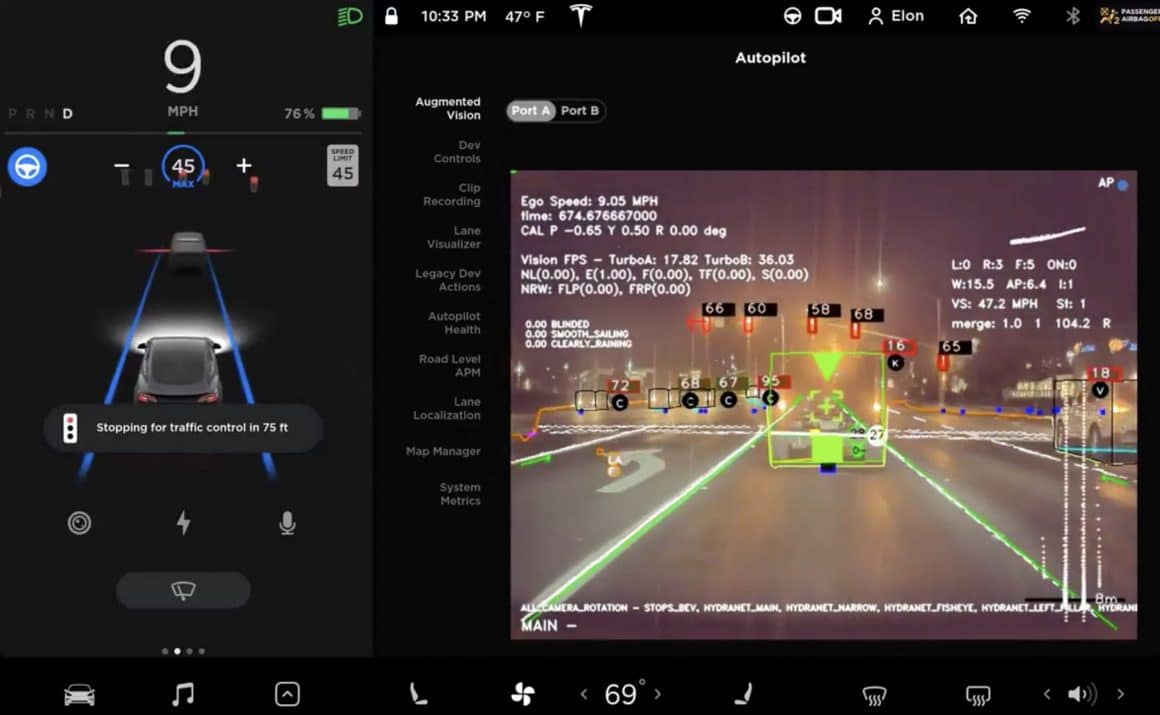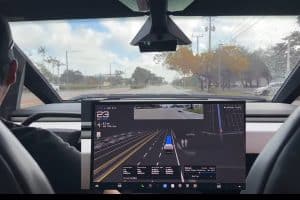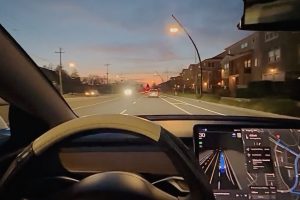A recent set of updates from Elon Musk has revealed that Tesla is looking to eventually update its Autopilot and Full Self-Driving suite to a camera-based system. This means that in the future, Tesla’s all-electric vehicles would be navigating themselves and performing driver-assist functions without the use of components such as radar.
Musk’s update came as a response to a post from Tesla owner and FSD Beta user @WholeMarsBlog, who shared a clip of his Model 3 navigating away from a parking lot to its destination without input from its driver. In his response, Musk noted that FSD Beta V9.0, which has been highly-anticipated by the EV community, is almost ready.
Elaborating further, Musk explained that the V9.0 update should improve the FSD Beta’s performance in corner cases and bad weather, which remain challenging to the advanced driver-assist system today. But this was not all, as Musk noted that the update would be “pure vision, no radar.” When prodded further, the Tesla CEO admitted that Tesla eventually plans to get rid of radar altogether in its future vehicles.
Unsurprisingly, Musk’s statements about Tesla’s impending removal of radar attracted its own fair share of critics, many of whom argued that a pure vision approach is a step backward. This is especially notable as Tesla is already using fewer sensors for its driver-assist systems compared to competitors like Cruise and Waymo, both of whom rely on lidar and high-definition maps to navigate.
Musk responded to these concerns, highlighting that ultimately, vision has the potential to be far superior to radar.
“When radar and vision disagree, which one do you believe? Vision has much more precision, so better to double down on vision than do sensor fusion. Sensors are a bitstream and cameras have several orders of magnitude more bits/sec than radar (or lidar). Radar must meaningfully increase signal/noise of bitstream to be worth complexity of integrating it. As vision processing gets better, it just leaves radar far behind,” Musk explained.
Tesla’s approach to full self-driving is partly based on the notion that humans do 100% of their driving through vision alone, without any radar or lidar use. This was highlighted by Tesla executives since Autonomy Day back in 2019, when the company unveiled its custom FSD computer. As for concerns about whether cameras could provide the same level of safety as radar in detecting what is happening several cars ahead, Musk noted that there’s a high probability that vision could perform just as well.
“These things are best thought of as probabilities. There are 5 forward-facing cameras. It is highly likely that at least one of them will see multiple cars ahead,” Musk said.
Tesla is not the only company in the market that is looking into a vision-only approach. Last year, Intel Corp released a video of an autonomous car from MobilEye that was navigating around Jerusalem for about 20 minutes. Unlike other self-driving vehicles, MobilEye’s car was only equipped with a suite of cameras and nothing else. The brief video was impressive, showing the MobilEye autonomous car going through four-way intersections with no traffic lights, as well as inner-city lanes that required the vehicle to avoid pedestrians.





